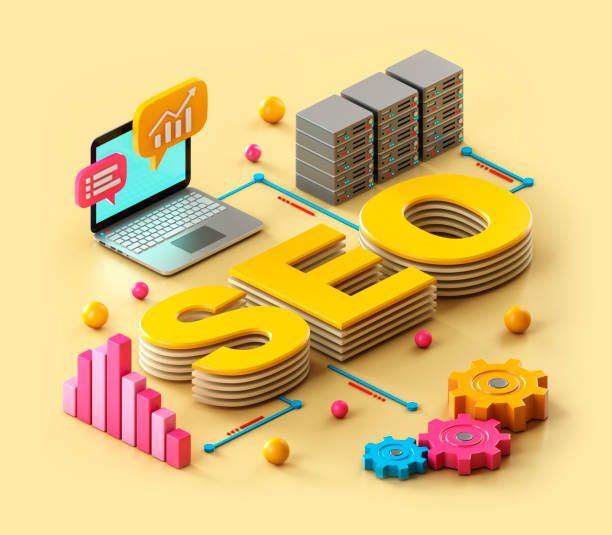Mastering Search Engine Optimization (SEO) is like unlocking the gateway to online visibility and success. SEO, in essence, is the strategic process of enhancing a website’s visibility on search engine result pages (SERPs) organically, by optimizing various elements to align with search engine algorithms. As search engines remain the primary navigational tool for internet users, SEO is essential for making sure your website gets seen.
If you’re itching to learn about SEO or perhaps you’re a business owner ready to take charge of your business online presence to make more profit, you’re in the right spot! This beginner’s guide to SEO is your gateway to getting started in the game.
Understanding How Search Engines Work
Search engines like Google, Bing, and Yahoo are like massive digital libraries, constantly indexing and organizing information from websites across the internet. When you type a query into a search engine, it employs complex algorithms to sift through this vast database and deliver the most relevant results to you. These algorithms consider various factors such as the content quality, website authority, user experience, and relevance to your query. The search engine then ranks these results based on their perceived value to you, aiming to provide the most helpful and accurate information possible.
On-Page SEO
On-Page SEO refers to the optimization of individual web pages to improve their search engine rankings and attract more organic traffic, dealing with elements directly within the website itself. Here’s a breakdown of key components:
- Keyword Research
Keywords are the words and phrases that users type into search engines to find information. Integrating relevant keywords into your website’s content helps search engines understand what your site is about and matches it with users’ queries. However, the emphasis is not just on stuffing keywords but rather on using them naturally and strategically within your content. Effective keyword research identifies the terms your audience uses, enabling content optimization to enhance visibility and attract organic traffic. This process is integral to SEO, ensuring websites appear in relevant search results and resonate with target audiences.
- Content Optimization
Creating high-quality, relevant content is crucial for on-page SEO. This includes using target keywords strategically throughout the content, ensuring readability, and providing valuable information to users. Content should be well-structured with headings, subheadings, and bullet points to enhance readability and user experience.
- Title Tags and Meta Descriptions
Title tags and meta descriptions are HTML elements that provide summaries of a web page’s content. Optimizing these elements with relevant keywords and compelling descriptions can improve click-through rates from search engine results pages (SERPs) and enhance the page’s visibility.
- URL Structure
A clean and descriptive URL structure not only helps search engines understand the content of a page but also makes it easier for users to navigate. Including relevant keywords in the URL can improve the page’s ranking for those terms.
- Internal Linking
Internal linking involves linking to other pages within the same website. It helps search engines discover and index other pages on the site, distribute link equity and improve website navigation. Strategic internal linking can also help establish site architecture and prioritize important pages.
- Image Optimization
Optimizing images involves using descriptive file names, alt text, and captions to help search engines understand the content of the images. This can improve the page’s visibility in image search results and enhance overall on-page SEO.
Off-Page SEO
Off-Page SEO refers to the optimization efforts made outside of your website to improve its search engine rankings and visibility, dealing with activities performed elsewhere on the web that indirectly impact your site’s performance in search results.
- Link Building
One crucial aspect of Off-Page SEO is link building, which involves acquiring backlinks from other reputable websites to your own. Backlinks act as “votes of confidence” from other sites, signaling to search engines that your content is valuable and trustworthy. However, it’s essential to focus on quality over quantity when building backlinks, as links from authoritative and relevant websites carry more weight.
- Social Media Signals
Engaging with your audience on platforms like Facebook, Twitter, and LinkedIn can increase brand visibility and drive traffic to your website. Additionally, mentions and shares on social media can indirectly impact your search rankings by boosting brand awareness and attracting more visitors to your site.
- Online Reputation Management
Another Off-Page SEO strategy involves online reputation management. Monitoring and managing online reviews, mentions, and discussions about your brand can help build trust with your audience and improve your site’s credibility in the eyes of search engines.
Technical SEO
Technical SEO refers to the optimization of a website’s technical elements to improve its search engine visibility and user experience. Technical SEO delves into the backend infrastructure of a website. It ensures that search engine crawlers can efficiently crawl and index the site, leading to better rankings and increased organic traffic.
- Site Structure
Site structure refers to how the pages on a website are organized and interconnected. A well-structured site makes it easier for search engines to crawl and index content, leading to better visibility in search results. This involves organizing content into categories and subcategories, using clear navigation menus, and implementing internal linking strategies. By creating a logical hierarchy and ensuring that every page is easily accessible within a few clicks, you can enhance user experience and improve search engine rankings.
- Website Speed
Website speed is a critical factor in both user experience and SEO. Search engines prioritize fast-loading websites because they provide a better user experience. Therefore, optimizing performance not only improves SEO but also enhances user satisfaction and reduces bounce rates. To improve website speed, it’s essential to optimize images, minify CSS and JavaScript files, leverage browser caching, and use a reliable hosting provider.
- Mobile Optimization
With the majority of internet users accessing websites through mobile devices, mobile optimization is more important than ever for SEO. This includes using responsive design, optimizing for different screen sizes, and improving mobile page speed. Mobile-friendly design not only improves user experience but also boosts search engine rankings, as Google prioritizes mobile-friendly websites in its mobile search results.
- Schema Markup
Schema markup is a form of structured data that helps search engines understand the content of a webpage more effectively. By adding schema markup to HTML code, website owners can provide additional context about their content, such as product details, reviews, events, and more. This rich snippet information can enhance search engine results with visually appealing and informative snippets, increasing click-through rates and improving overall SEO performance.
- XML Sitemap
An XML sitemap is a file that lists all the pages on a website and provides metadata about each page, such as when it was last updated and how often it changes. Submitting an XML sitemap to search engines like Google helps them discover and crawl website pages more efficiently, ensuring that no important content is overlooked. XML sitemaps are especially useful for large websites with complex structures or dynamic content that may not be easily discovered through traditional crawling methods.
- Robots.txt
The robots.txt file is a text file located in the root directory of a website that instructs search engine crawlers which pages or directories should not be crawled or indexed. By specifying certain areas of the website to exclude from crawling, website owners can control how search engines access and interpret their content. This can be useful for blocking sensitive or duplicate content, preventing search engines from indexing staging or development sites, and preserving the crawl budget for important pages.
Content marketing and SEO
Content marketing and SEO are two intertwined strategies that work hand in hand to achieve common goals. Content marketing focuses on creating valuable, relevant content to attract and engage audiences, while SEO aims to optimize that content for search engine visibility. Integrating these strategies involves aligning content creation with SEO principles such as keyword optimization, internal linking, and mobile-friendliness. By weaving SEO elements into content marketing efforts, you can enhance your website’s visibility in search results while delivering valuable content that resonates with your audience.
- Importance of High-Quality, Engaging Content
High-quality, engaging content not only satisfies search engine algorithms but also captivates and retains the attention of your target audience. Valuable content establishes your authority in your industry, builds trust with your audience, and encourages sharing and backlinking – all of which are crucial factors for SEO success. Whether it’s blog posts, videos, infographics, or podcasts, investing in compelling content pays dividends in terms of improved search rankings and increased organic traffic.
- Utilizing Keyword Research for Content Creation
Keyword research is the compass that guides content creation in SEO. By identifying the terms and phrases your target audience is searching for, you can tailor your content to address their needs and interests effectively. Integrating relevant keywords into your content – including titles, headings, body text, and meta tags – signals to search engines what your content is about and increases its likelihood of appearing in relevant search results.
- Understanding User Intent and Creating Content Accordingly
User intent refers to the underlying motivation behind a search query – whether informational, navigational, transactional, or commercial. By analyzing user intent, you can tailor your content to align with the specific needs and desires of your target audience at each stage of their customer journey. Crafting content that addresses user intent not only enhances user experience but also improves your chances of ranking higher in search results and driving valuable organic traffic to your website.
Measuring SEO Success
Measuring SEO success is essential for understanding the effectiveness of your optimization efforts and making informed decisions to improve your website’s performance in search engine results. There are various key metrics and methods to gauge SEO success, each offering valuable insights into different aspects of your website’s visibility, traffic, and engagement.
- Overview of Key Performance Indicators (KPIs)
Key performance indicators (KPIs) are metrics that help gauge the effectiveness of your SEO efforts. These KPIs provide insights into various aspects of your website’s performance in search engine results and user interactions. Some essential KPIs for SEO include organic traffic, keyword rankings, click-through rate (CTR), bounce rate, conversion rate, and backlink profile. By monitoring these metrics, you can assess the impact of your SEO strategies and identify areas for improvement.
- Introduction to Tools like Google Analytics and Google Search Console
Google Analytics and Google Search Console are indispensable tools for tracking and analyzing website performance in search engines. Google Analytics offers detailed insights into website traffic, user behavior, and conversion metrics. It allows you to track organic traffic, monitor keyword performance, and identify top-performing pages. On the other hand, Google Search Console provides valuable data on website indexing, search queries, crawl errors, and backlinks. These tools offer valuable information that helps you understand how users find and interact with your website, allowing you to optimize your SEO strategies accordingly.
- Importance of Tracking Metrics and Adjusting Strategies Accordingly
Tracking SEO metrics is essential for evaluating the success of your SEO campaigns and making informed decisions to improve performance. By continuously monitoring KPIs, you can identify trends, patterns, and areas of improvement. Moreover, tracking metrics allows you to measure the impact of algorithm updates, website changes, or new content initiatives on your SEO performance. This data-driven approach enables you to adjust your strategies, optimize your website for better search visibility, and ultimately drive more organic traffic and conversions. Regular monitoring and analysis of SEO metrics ensure that you stay ahead of the competition and maintain a strong online presence.
For beginners embarking on their SEO journey, now is the perfect time to start implementing strategies. While it may seem daunting at first, every step taken toward optimizing your website for search engines brings you closer to increased visibility and success. Remember, the benefits of investing in SEO extend far beyond immediate results. It’s a long-term commitment that cultivates sustainable growth, enhances brand credibility, and fosters lasting connections with your target audience. So, embrace the learning curve, stay persistent, and watch as your website flourishes in the digital landscape, reaping the rewards of your SEO efforts.
Feeling a bit lost? No worries! Our team has your back! You can also check out our hackbook for a sneak peek into how we help businesses rock it online.




